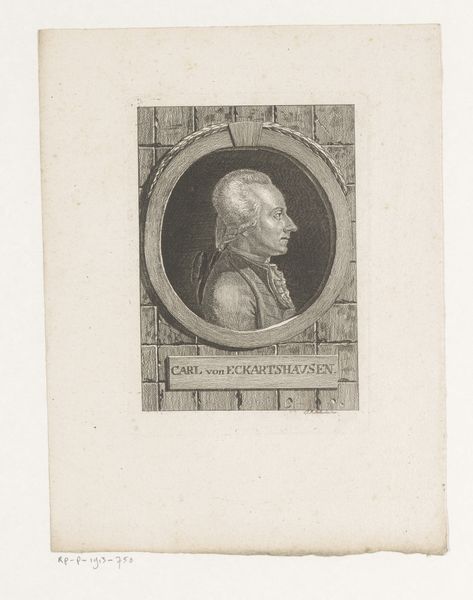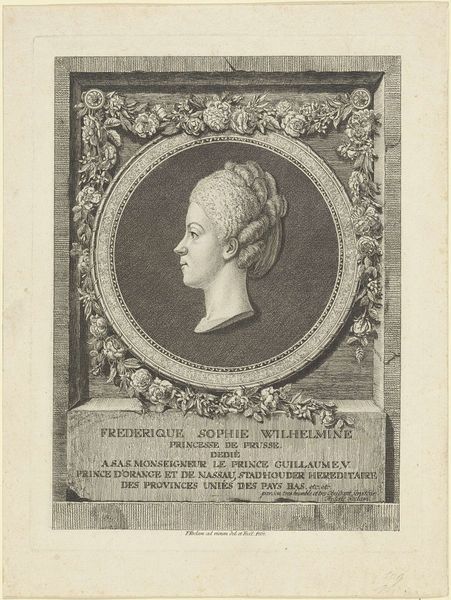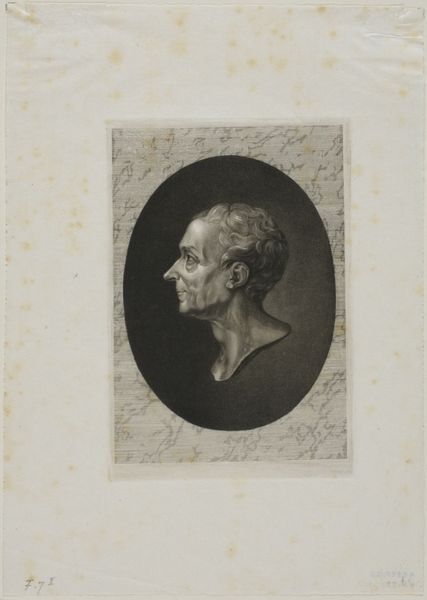
print, engraving
#
portrait
#
neoclacissism
# print
#
pencil drawing
#
engraving
Dimensions: height 260 mm, width 182 mm
Copyright: Rijks Museum: Open Domain
Editor: We're looking at Girolamo Carattoni's "Portret van musicus Betti", an engraving, dating anywhere between 1767 and 1809. It has an interesting composition. The portrait is framed, as is a bas-relief sculpture underneath it. The precision and clean lines are quite striking. What do you notice, considering its visual structure? Curator: The oval portrait, placed above a rectangular scene, immediately establishes a hierarchy of forms, wouldn't you agree? Note the sharp delineation, almost geometric, throughout the work. Observe how the texture created by the engraving technique contributes to the clear definition of forms. Editor: Yes, the sharp delineation is what really makes it, and the gray tones help bring it to life. Can we say anything more about the geometry of this work? Curator: Geometry serves as the foundational principle, the regulating device for our perception. The arrangement isn’t random, of course. Examine the echoing rectangles that encase each element; consider the effect the repeating shapes might suggest about the period in which this print was made. Editor: So it’s the relationship between the lines, shapes, and tonal values that constructs meaning? And by looking at these inherent qualities, can one place this art within the Neoclassical movement? Curator: Precisely. Note the absence of emotional flourish; the emphasis on symmetry; the focus on clear, rational form. By concentrating on the internal organization, we understand how the image functions as an aesthetic object and also as a signifier of particular cultural values. Editor: I see it now. Thanks for showing me how to read an image purely from its structure and composition! Curator: It has been a pleasure; analyzing how line, shape and form come together, provides profound insight.
Comments
No comments
Be the first to comment and join the conversation on the ultimate creative platform.













